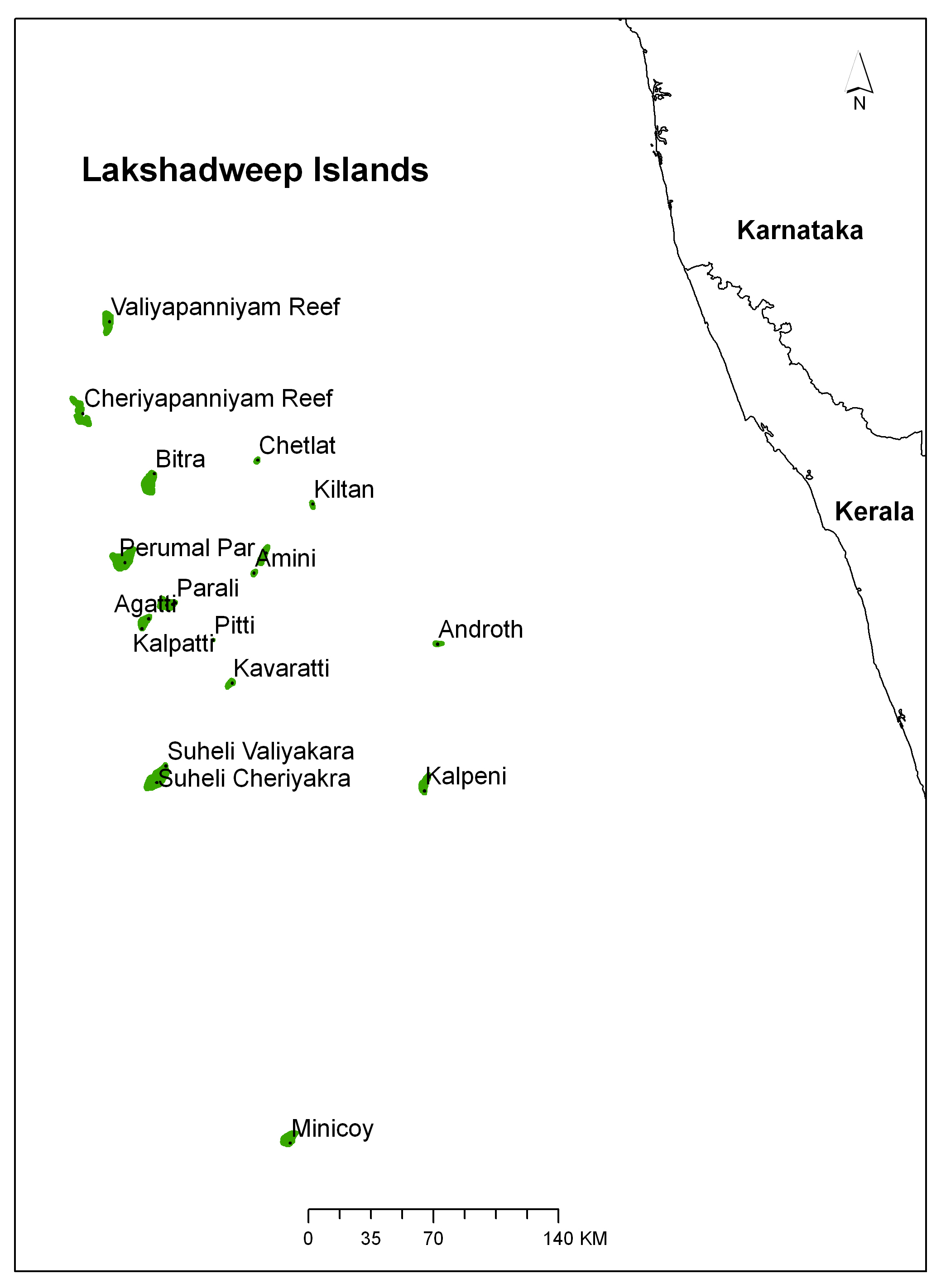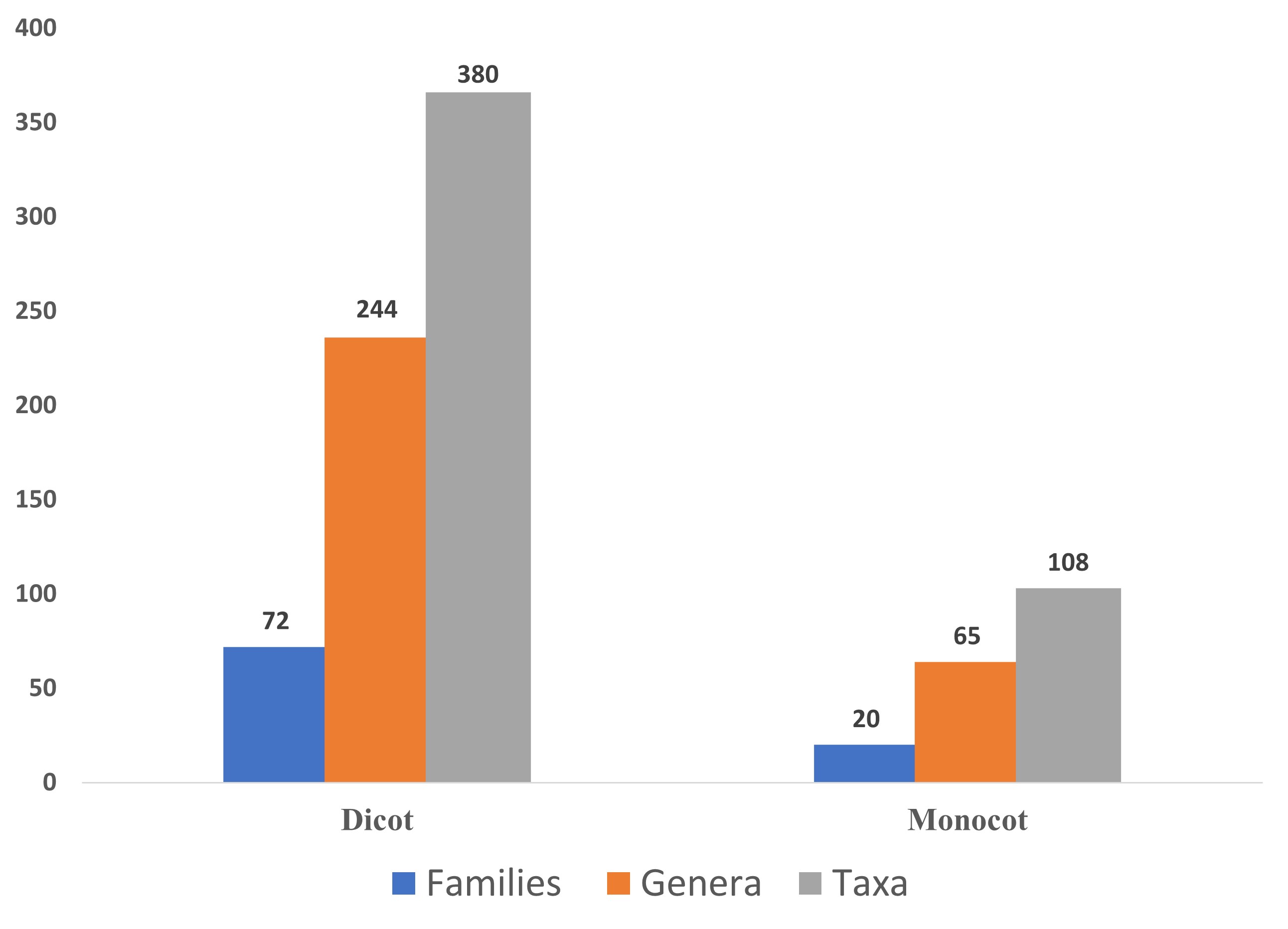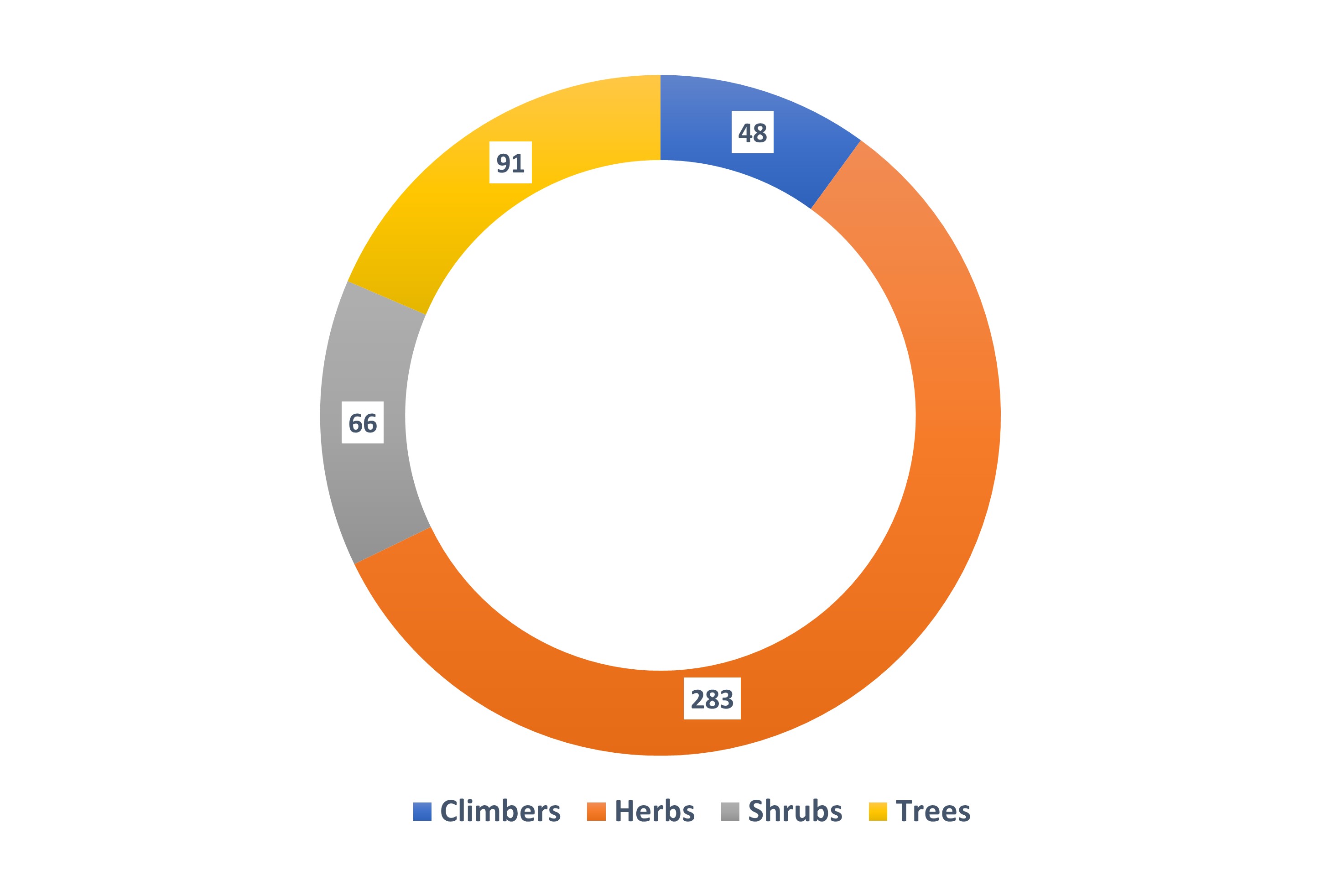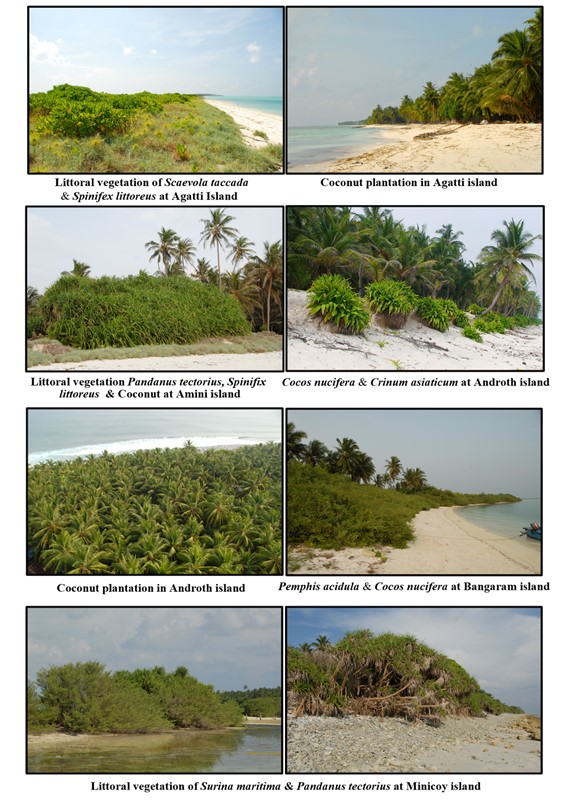Introduction
The Lakshadweep archipelago is the smallest Union territory of India. This archipelago consists of 36 islands, 12 atolls, 3 reefs and 5 submerged sand banks in the Arabian Sea spread over an area of about 32 km2. Out of 36 islands only 11 are inhabited. These islands are similar in floristic composition due to prevalence of similar type of soil, climate and rainfall in all these islands.
According to the theory of Sir Charles Darwin (1842), Lakshadweep islands have a biological origin. These islands are therefore, mostly coralline, which are formed by the initial deposition of sand banks due to wind and wave action. Atoll encircling the lagoon was formed when the volcanic islands became completely submerged. Sand banks were first formed in an atoll and later transformed into the nesting grounds for seabirds (Bhargavan and Nair 1999). Fertility of the soil increased gradually by their droppings and later resulted in the formation of ground vegetation.
Geologically, the Lakshadweep group of islands are considered to be a continuation of the Aravalli system of rocks of Rajasthan and Gujarat through the banks of the Gulf of Khambhat and through the Agaria banks further south (Rao and Ellis 1995).
Lakshadweep has an indigenous population of Muslims. Malayalam is spoken in all islands, except Minicoy, besides a specialized dialect known as ‘Jessri’. In Minicoy, the people speak Mahal, which is written in Maldivian Dhivehi script. Entire population of the Lakshadweep has been classified as Scheduled Tribe because of their economic and social backwardness (Ansarali and Sivadasan 2009). The principal languages of Lakshadweep are Malayalam, Jeseri (Dweep Bhasha) and Mahl (Singh 2014). The people of all the northern islands speak a dialect of Malayalam with Tamil and Arabic influences, due to extensive trade activities of these people. The people of Minicoy, the southernmost atoll, speak Mahl, a variant of Divehi (Dhivehi) language spoken in the Maldives. Kolkali and Parichakali are the two popular folk-art forms in the Territory. They are an integral part of the cultural milieu except in Minicoy where “LAVA” is the most popular dance form. Some of the folk dances have a resemblance with those in North Eastern India. For marriages “OPPANA” is a common feature, a song sung by a lead singer and followed by a group of women.
Taxonomic literature on the flora of Lakshadweep is fragmentary mainly because of their scattered nature and isolation from the mainland. The earliest account was given for Flora of Androth (now called as Andrott) Island by Lieut. Wood, who visited the island in December, 1834 (Prain 1892). The botanical accounts of these islands were followed by Hume while he visited the islands in 1875 for an ornithological survey and also collected and described some plants (1896). Later, a series of expeditions were made by a group of scientists in a steamer H.M.I.M “Investigator”, and contributed much to the knowledge of botany of Lakshadweep (Prain 1889, 1892, 1893, 1894). Hooker (1904), however, included the plants under Malabar and accounted Lakshadweep flora to be of Malayan origin with no endemics. Other accounts were published by Willis (1901), Willis and Gardiner (1901), Ellis (1924), Krishnaswamy (1955), Wadhwa (1960, 1961), Rao (1971), Rao and Sashtry (1972, 1974), Mannadiar (1977), Sivadasan and Joseph (1981), Joseph and Sivadasan (1982), Wafar (1986), Almeida (1991), Rao and Ellis (1995), Reddy and Roy (2011). The present floristic study recorded 488 angiosperm taxa from Lakshadweep Islands, based on the field surveys, herbarium studies and published literature.
Materials and Methods
Data Collection
Regular plant exploration tours were undertaken to Lakshadweep islands (Fig. 1) in different seasons. In each field trip, the data collected include: habit, habitat, flowering and fruiting period and local names. Plant samples of the species were collected from different islands. The specimens were critically studied for morphological details and for correct identification. Identification was confirmed by consulting standard literature and through reference against identified herbarium specimens at Botanical Survey of India, Western Regional Centre herbarium, Pune (BSI), Central National Herbarium (CAL), Southern Regional Centre herbarium (MH). Web databases such as International Plant Names Index (IPNI), Biodiversity Heritage Library, Global Biodiversity Information Facility (GBIF) and Plants of the World Online (POWO) were also consulted for correct nomenclature, author citation and additional information.
Study area
Results
The present floristic study recorded 488 angiosperm taxa from Lakshadweep Islands, based on the field surveys, herbarium studies and published literature. The flora is represented by 309 genera under 92 families. Among these, there are 380 taxa belonging to dicots (78%) represented by 244 genera and 72 families and 108 taxa (22%) belonging to monocots which is represented by 65 genera under 20 families (Fig. 2). These 488 taxa may be segregated in to 91 trees, 66 shrubs, 48 climbers and 283 herbs (Fig. 3).
The five endemic taxa are reported from Lakshadweep islands of which Cyperus pachyrrhizus var. humei is endemic to Lakshadweep islands only. The five dominant families are viz., Fabaceae (35 genera & 70 taxa), Poaceae (23 genera & 39 taxa), Asteraceae (21 genera & 30 taxa), Malvaceae (13 genera & 23 taxa), Cyperaceae (6 genera & 23 taxa). The five dominant genera are viz. Crotalaria (13 taxa), Cyperus (12 taxa), Euphorbia (10 taxa), Ipomoea (8 taxa) and Phyllanthus (7 taxa).
The five endemic taxa are reported from Lakshadweep islands of which Cyperus pachyrrhizus var. humei is endemic to Lakshadweep islands only.
Being situated in the tropics surrounded by sea with flat coral sand, the overall pattern of vegetation is almost uniform in all the islands, except the little variation in Andrott and Minicoy. Mangroves do not get established on Lakshadweep islands as there are no rivers or rivulets carrying silt (Reddy and Roy 2011). The scarcity of natural stagnant pools or lakes results in absence of true fresh-water flora in these islands. Ethnobotanical investigations of the islands were conducted by Bhat et al. 1995 who listed 28 plant species of varied uses and 53 species of medicinal plants occurring on the islands.
The natural flora of Lakshadweep comprises littoral or strand vegetation of aquatic angiosperms primarily two seagrass families such as Cymodoceaceae with 5 taxa of 4 genera and Hydrocharitaceae with 4 taxa of 3 genera. Thalassia hemprichii (Ehrenb.) Asch. is the most dominant sea grass in Lakshadweep islands. The shore possesses creepers mainly Ipomoea pes-carpae (L.) R. Br., Launaea sarmentosa (Willd.) Sch.Bip. ex Kuntze, Thuarea involuta (G. Forst.) R. Br. ex Sm., etc. followed by few grasses. The littoral forests are evergreen adapted to drought conditions, high salinity of soil water, strong winds and sandy soil with poor nitrogen and less organic matter. Coconut groves are dominant as the main commercial crop of these islands. In addition to Coconut, which has four native varieties viz., Lakshadweep dwarf, Lakshadweep micro and Lakshadweep ordinary (Red variety and green variety). The littoral trees and shrubs characteristically border the base of coconut palms of which Scaevola taccada (Gaertn.) Roxb. is the most dominant tree species. The conspicuous ground runner Ipomoea pes-carpae (L.) R. Br. plays a strong role in preventing soil erosion of the islands. The marshy areas are usually inhabited by Phyla nodiflora (L.) Greene, Cyperus rotundus L., Eleocharis geniculata (L.) Roem. & Schult. and Fimbristylis spp., etc. There are many medicinal plant species of which the important ones are Abutilon indicum (L.) Sweet, Acorus calamus L., Bacopa monnieri (L.) Wettst., Calotropis gigantea (L.) R. Br., Colubrina asiatica Brongn., Cymbopogon citratus (DC.) Stapf, Dodonaea viscosa Jacq., Ficus racemosa L., Gloriosa superba L., Heliotropium arboretum (Blanco) Mabb., Leucas aspera (Willd.) Link, Morinda citrifolia L., Ocimum basilicum L., Ouret lanata (L.) Kuntze, Phoenix dactylifera L., Phyllanthus fraternus G. L. Webster, Scaevola taccada (Gaertn.) Roxb., Sida cordata (Burm.f.) Borss. Waalk., Tacca leontopetaloides (L.) Kuntze, Thespesia populnea (L.) Sol. Ex Correa, Ticanto crista (L.) R.Clark & Gagnon. Besides, some of the commonly cultivated plants are Cocos nucifera L., Allium cepa L., Carica papaya L. and Moringa oleifera Lam. (Fig. 4).
Discussion
In India, over the past few decades, an extensive landscape change has been observed in major biodiversity hotspots (Skariah and Suriyakala 2022, Niranjana et al. 2024). In Lakshadweep, the natural vegetation belongs to the littoral vegetation type and within the central domain of the inhabited islands, the natural vegetation is replaced by cultivated plantations. Therefore, the main causative factors for the destruction of natural vegetation are irrational methods of raising plantations and habitation. Recent research shows that there are only limited expansive forest areas with the largest patch index value of 11.73%. Many of the small forest fragments are scattered across the landscape. Currently, Lakshadweep islands are exceedingly at risk of global change and are also characterized by low natural habitat cover as the natural vegetation of the area is particularly under human-induced stress. Another serious threat to the Lakshadweep islands is posed by coastal erosion, the high-speed winds and huge waves hitting the seashore also result in land erosion and reduction of the land surface and the size of the island on the whole. The Lakshadweep archipelago is gradually getting exposed to developmental activities which are likely to create a strong environmental imbalance which may harm the islands and their inhabitants as these islands are sustained through delicate ecological balance.
Thus, urgent concerted efforts should be undertaken to conserve this comparatively pristine and fragile ecosystem. There is only one protected area, viz., Pitti (Bird Island) Wildlife Sanctuary (0.01 km2) and islands such as Andrott, Kalpeni and Minicoy may be declared as protected areas as they have comparatively good patches of forests with species diversity. Degraded areas should be reclaimed with suitable native species.








